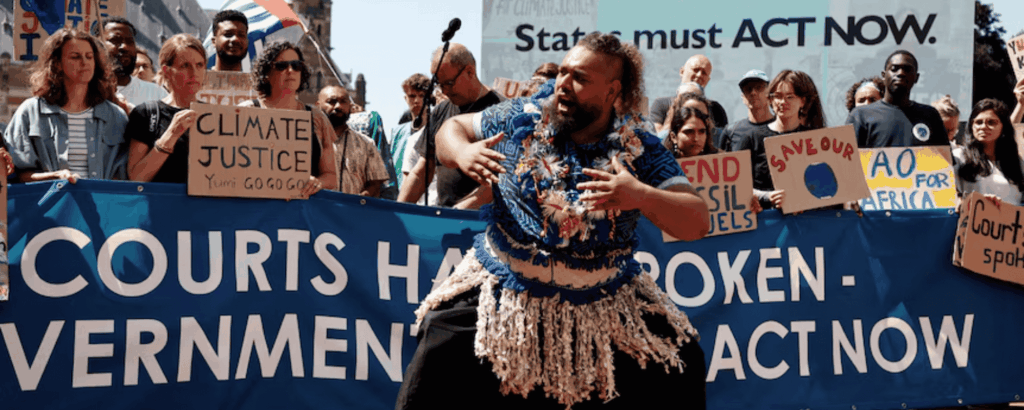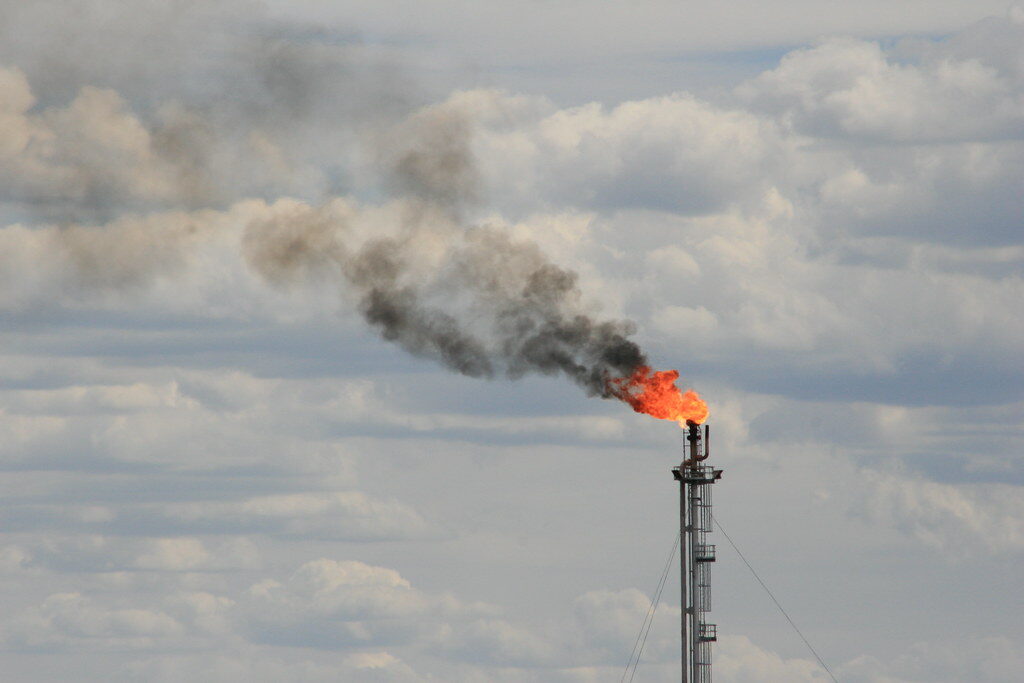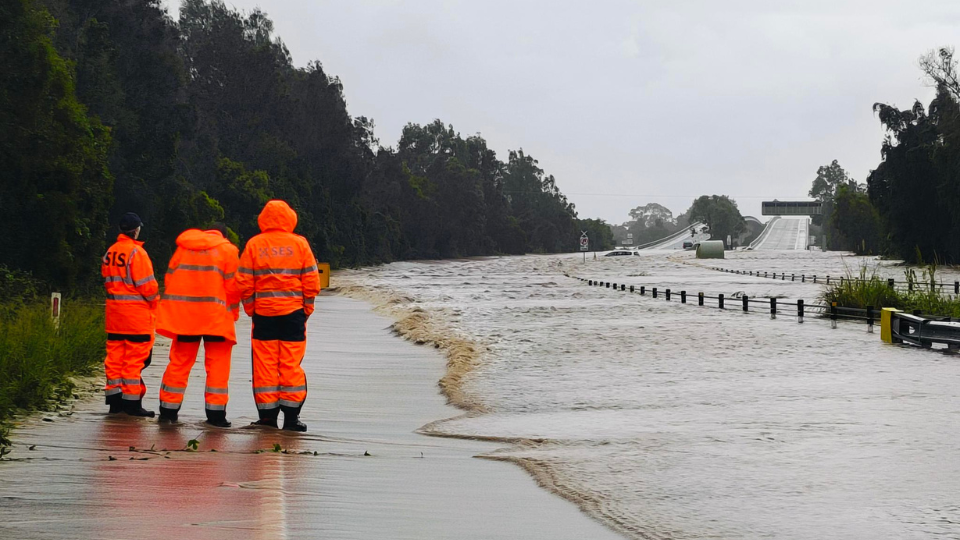For at least 30 years, since the publication of the Intergovernmental Panel on Climate Change’s ‘First Assessment Report’ in 1990, scientists have issued progressively more urgent calls to tackle the escalating climate crisis, driven by the burning of coal, oil and gas.
The Albanese Labor Government’s imminent decision on Australia’s 2035 climate target will shape the lives of every Australian. Climate Council’s latest report, Stronger Target, Safer Future: Why Australia’s 2035 Climate Target Matters, warns the safety, security and prosperity of our communities and environment is at stake as the government finalises their decision.
The science is clear. To do our fair share to hold global warming to well below 2°C, Australia needs to reduce climate pollution to 75% below 2005 levels by 2030, and reach net zero by 2035. Every fraction of a degree of warming avoided matters. While some climate impacts are getting progressively worse, like heatwaves or bushfire risk, beyond 2°C scientists warn that we will see abrupt, irreversible changes or tipping points that supercharge global warming and cause widespread system collapse, like:
- The loss of the Greenland and West Antarctic ice sheets, leading to multi-metre sea level rise.
- Frozen soils in the Arctic melt, releasing vast quantities of heat-trapping gases.
- The Amazon rainforest experiences massive dieback – where plants die off en masse – releasing huge volumes of heat-trapping gases.
Why is Australia setting a 2035 climate target?
The Paris Agreement, adopted by 195 countries in 2015, represents the world’s collective approach to tackling climate change. Under the agreement, nations submit targets to cut climate pollution – described as Nationally Determined Contributions – every five years, enabling them to ramp up efforts over time to cut climate pollution. Together, these targets chart a global pathway to slash climate pollution and prevent global temperatures from exceeding agreed limits.
Like countries world-wide, Australia is expected to submit our 2035 climate target this year. The current target, to reduce Australia’s climate pollution 43% on 2005 levels by 2030, was legislated in 2022
Australia’s 2035 climate target is an opportunity to set Australia on the right path, one which keeps our kids safer from climate change and sets our economy up for success in a fossil fuel-free world.
What climate target should Australia commit to?
Climate Council commissioned Climate Resource to assess the global warming implications of an Australian 2035 climate target. The analysis uses the latest emissions data and shows what an Australian target means for global average temperature risk.
This new analysis shows the only Australian target that’s compatible with holding global warming below 2°C is net zero by 2035. The closer the Australian Government’s 2035 climate target gets to net zero, the less climate risk Australians face.
The analysis also shows that a 2035 climate target to reduce pollution by 75% or more puts the world on track to heat by more than 2°C but likely less than by 2.3°C, if other countries adopt the same per capita share of the remaining global budget from 2024 onwards.
Weaker targets are aligned with even higher levels of global heating. Each fraction of a degree of global heating is associated with more catastrophic impacts to communities and ecosystems. A 2035 target to reduce pollution by 65% is aligned with below 2.4°C of global heating.
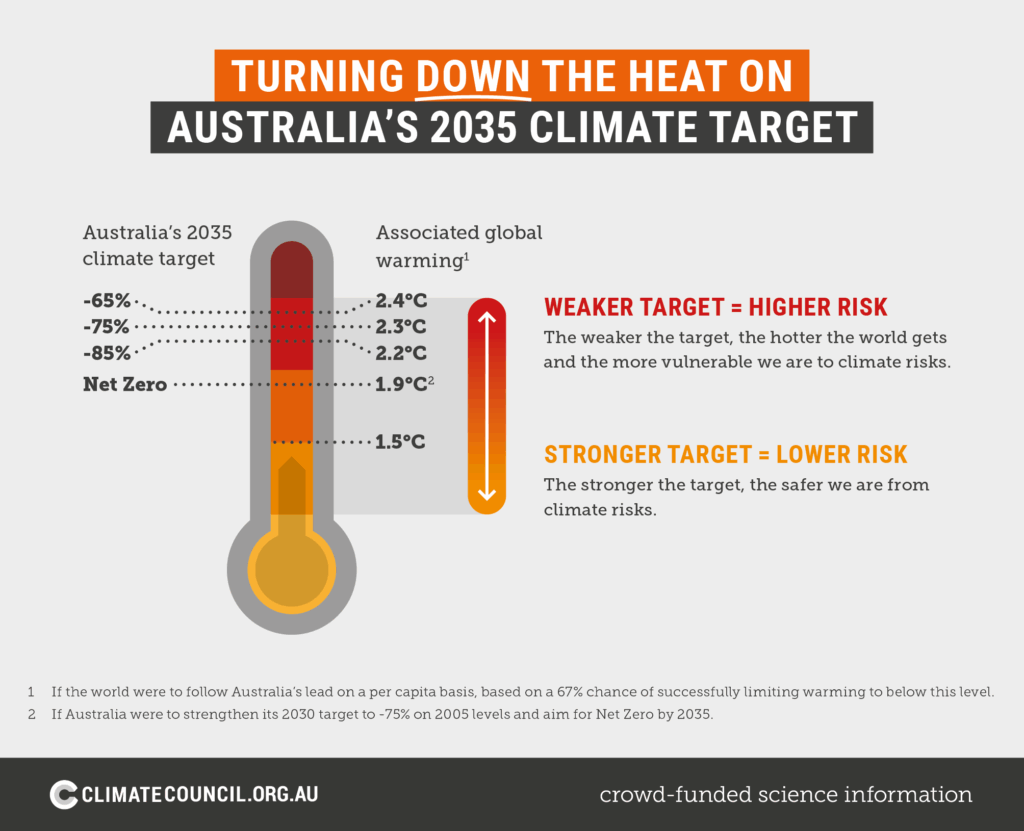
At the end of the day, the stronger the climate target, the safer Australians are from climate risks. On the other hand, the weaker the target, the more vulnerable we become.
What targets are possible for Australia to achieve over the next decade?
Several significant Australian-based research projects have demonstrated that deep cuts to climate pollution in the next 10 years are possible.
- The CSIRO’s pathway to reduce emissions by 75% on 2005 levels by 2035 and reach net zero by 2040. Under this scenario, average real GDP growth from 2020 to 2050 would only be 0.03 percentage points lower than the net zero by 2050 scenario, a cost significantly less than the economic, social and health benefits of cutting emissions.
- ClimateWorks Centre’s decarbonisation modelling, which shows how Australia can reduce emissions by 85% by 2035, demonstrates that a stronger 2035 target is achievable.
- Climate Council’s Seize the Decade report shows that, by going all-in on proven clean technology that’s already available, Australia could reach a 75% climate pollution cut this decade. This suggests much more is possible by 2035, with further time available for technology development, the rollout of solutions like batteries, electric vehicles and electrification, and the wider availability of zero-emissions fuels like green hydrogen and sustainable aviation fuels.
What changes would Australia need to make to deliver a strong 2035 climate target?
Achieving stronger climate targets will require more action across our economy to double down on what is already working, and build the clean industries of the future. Australian households and businesses will need to change the way they power themselves, make things, and get around. Australian governments will face changes to revenue sources as coal and gas exports decline, and new industries emerge.
We’re already making progress in Australia, with existing policies and efforts projected to cut climate pollution by almost 43% on 2005 levels by 2030 – a 13 percentage point improvement from 2021 projections. Already, a 51% climate pollution cut is projected by 2035 just by implementing current policies.
To protect Australians from the consequences of the climate crisis, Australia can also consider tackling its global carbon footprint by:
- Developing clean industries that contribute to global pollution reduction. For example, by developing green metals, cathode and battery manufacturing, sustainable shipping and aviation fuels;
- Supporting developing countries in their transition through climate finance or other mechanisms; and
- Reducing our exported climate pollution, particularly by not approving new fossil fuel projects.
In recent years, climate solutions have been delivered at a speed and scale that has surpassed expectations. The last decade has seen incredible progress, with the cost of many climate solutions reducing dramatically. The key lesson here is our ambitions should not be constrained by what we currently consider to be the limit of our clean energy potential. Just as progress in renewable electricity outstripped all expectations over the last decade, progress in industrial decarbonisation and harder-to-abate sectors can far exceed our current projections over the next.
By aiming high we give ourselves the best opportunity at fulfilling our true potential. The climate crisis demands that we do everything we can, everywhere we can, as fast as we can.
Climate consequences if the world fails to set strong targets
As our climate has warmed, Australia has been hit hard. Where long-term global warming is currently about 1.3°C above pre-industrial levels, Australia has warmed by an average of around 1.51°C since national records began in 1910.
This increase in temperature is fuelling more frequent and intense extreme weather events, including extreme heat, heavy rainfall, coastal inundation, dangerous bushfire weather and drought. Many communities have now experienced back-to-back disasters that would have previously been considered a 1-in-50 or 1-in-100 year weather event.
Climate-driven extreme weather events in Australia are already becoming more frequent and intense, with devastating impacts.
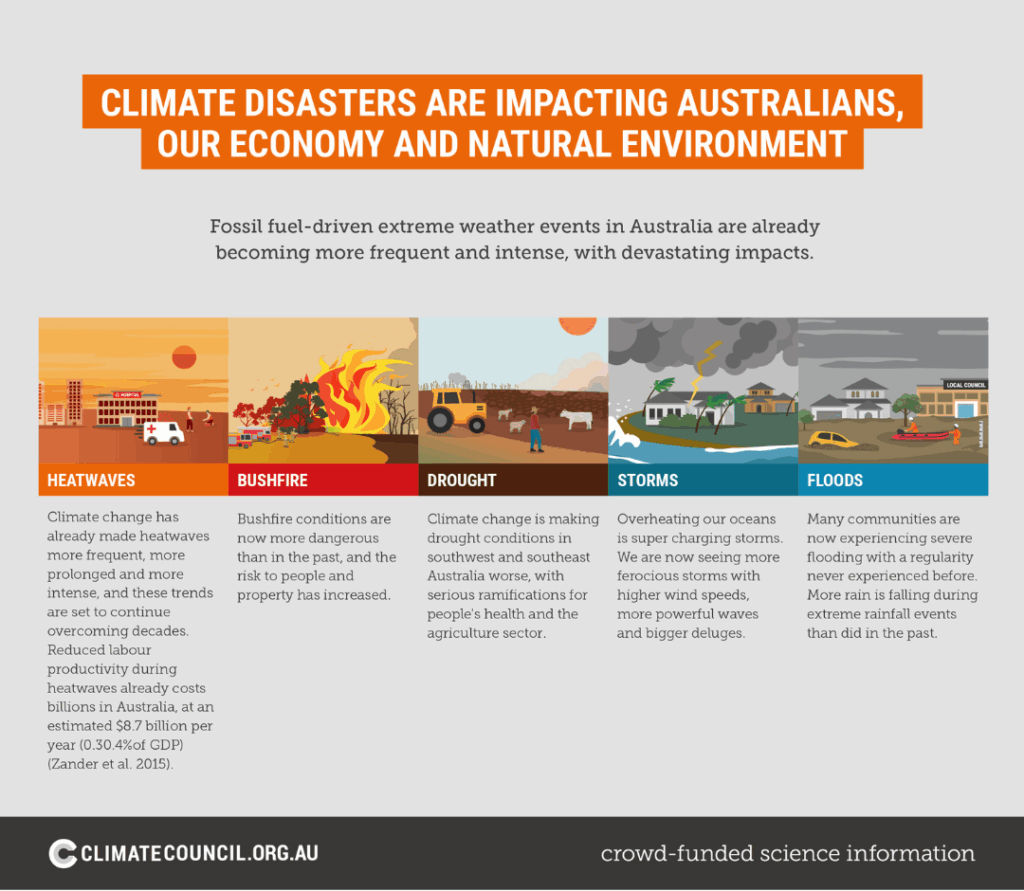
The future scale and severity of the climate crisis will depend on how quickly and deeply we slash global climate pollution. Each fraction of a degree of global heating is associated with more catastrophic impacts to communities and ecosystems.
For more information see our Stronger Target, Safer Future: Why Australia’s 2035 Climate Target Matters report.
Climate Council has launched a petition calling on the Australian Government to set the strongest possible 2035 climate target – and take urgent action to meet it!





